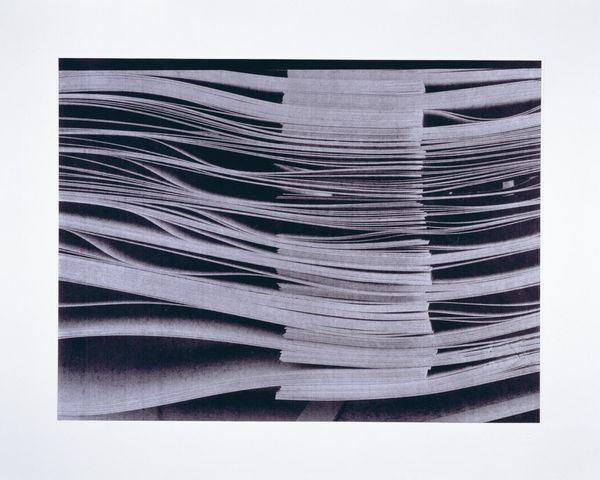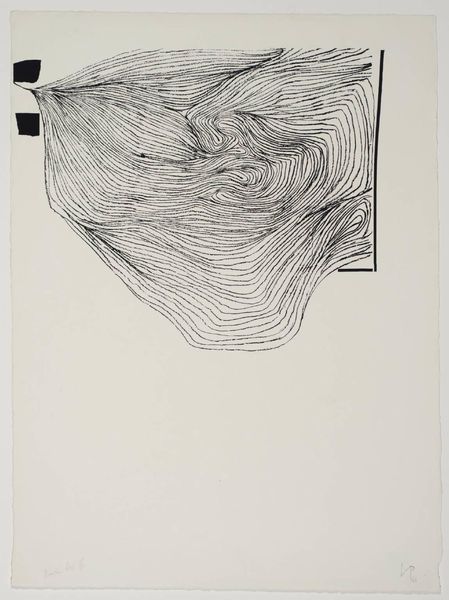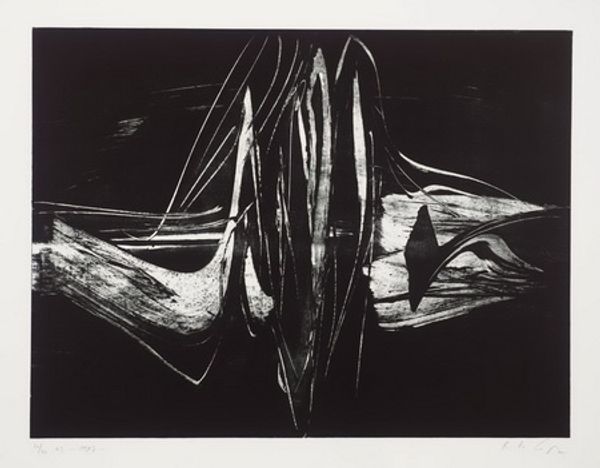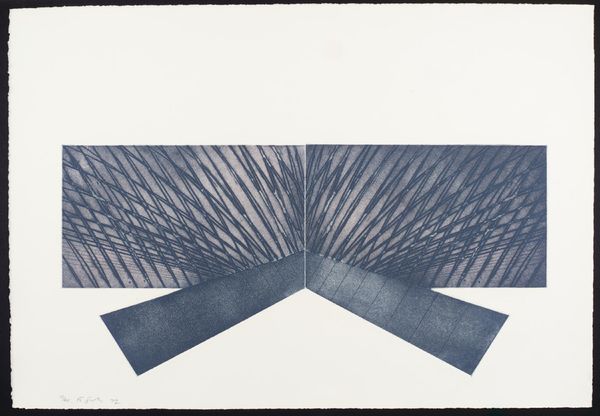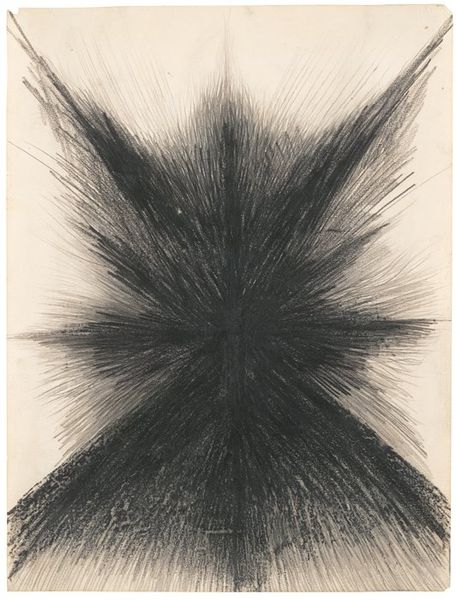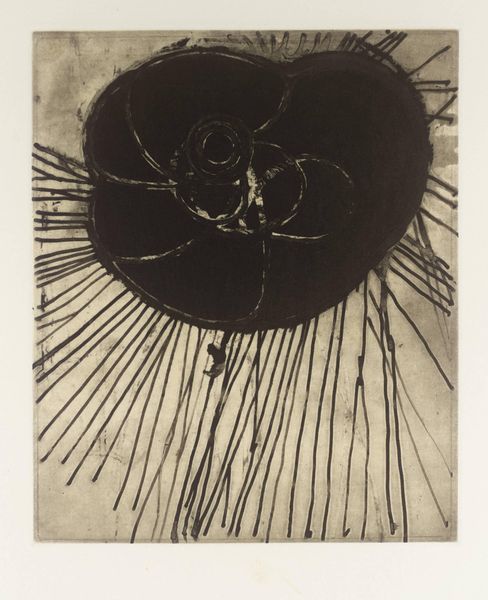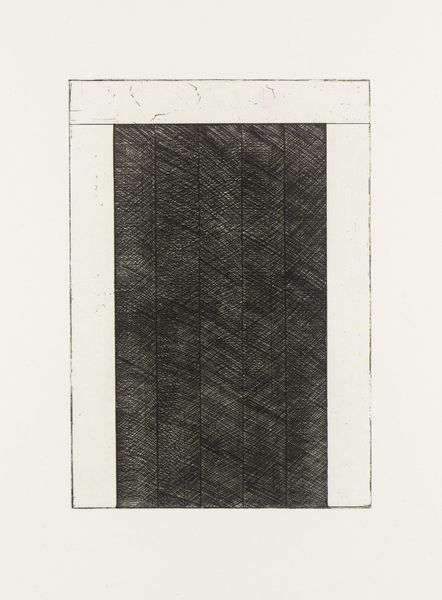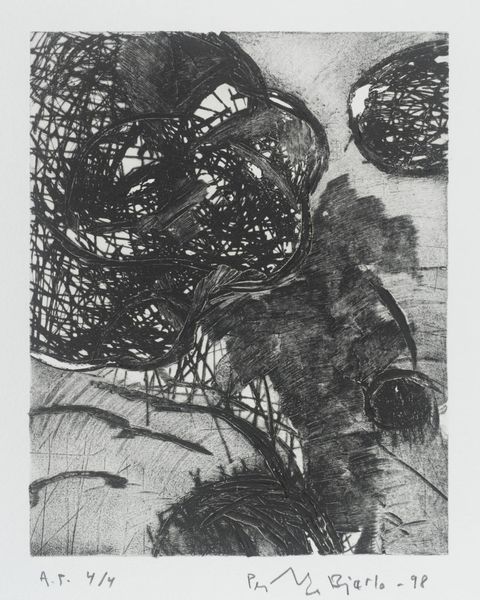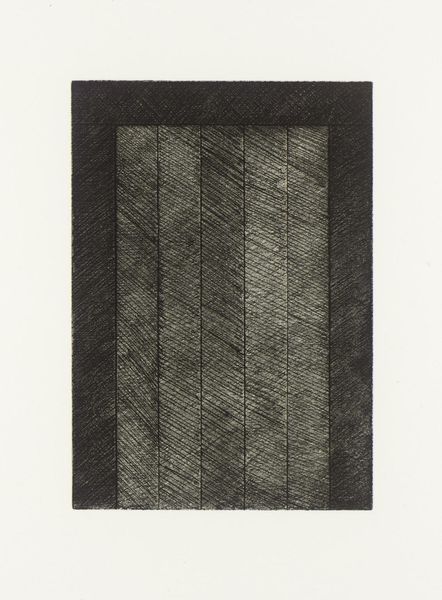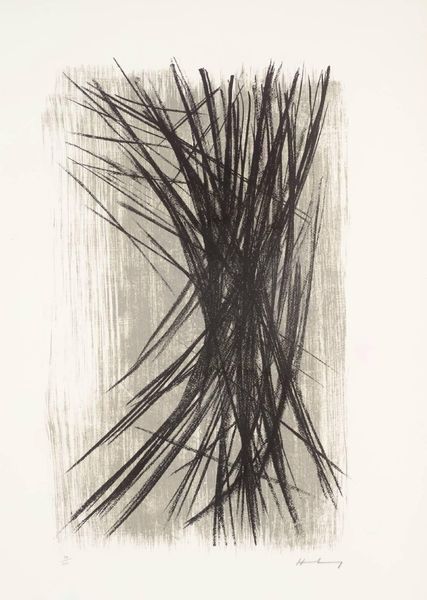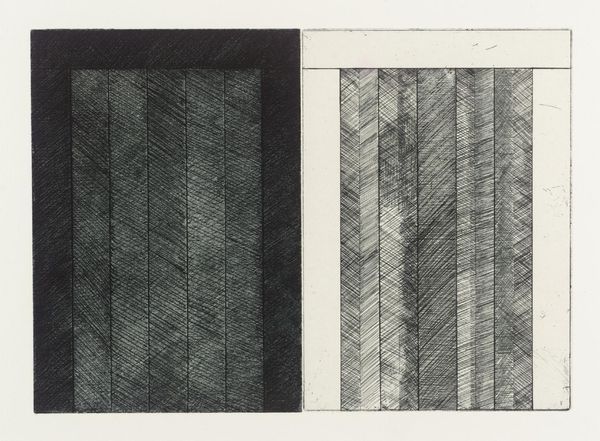
print, etching
# print
#
etching
#
abstract
#
geometric
#
line
Copyright: National Gallery of Art: CC0 1.0
Curator: This print, titled "Expulsion," was created by Harry Hoehn in 1968, utilizing the etching technique. It’s a strikingly abstract composition. What’s your immediate impression? Editor: Chaos. Utter chaos. It feels like an explosion, or perhaps something tearing itself apart. There's an overwhelming sense of energy. Curator: Considering the time it was made, 1968, do you think societal turmoil, or perhaps even personal upheavals for the artist, might have influenced its creation? Editor: Absolutely. 1968 was a year of intense social and political unrest across the globe. The Vietnam War protests, civil rights movements, assassinations... the zeitgeist was one of fragmentation and rebellion. It's almost impossible to separate an artwork from that background, particularly one with such a title. Curator: And technically, an etching involves laborious process, scratching an image into a metal plate, bathing it in acid, inking, and printing. What does that additive method say to you? Editor: The very nature of etching speaks to control and intentionality, but there's also an element of chance inherent in the acid's reaction. Perhaps this push and pull between design and accident reflects some ambivalence from the artist or some commentary about who dictates those conditions. The high contrast emphasizes this conflict too. It draws the eye. Curator: I wonder if Hoehn was engaging with ideas of mass production and the perceived devaluation of labor. Printmaking makes it possible to produce multiple identical images and participate in consumer culture, but is there something important and essential lost as compared to something crafted individually and in private, for oneself? What power lies in that? Editor: Museums often curate and elevate certain forms of image production. Hoehn, with this etching, and likely cognizant of that system of display, taps into something deeply affecting and indicative of the cultural moment in which he found himself. It prompts questions, visually mirroring that tumult of '68. Curator: Indeed, seeing it framed within a gallery changes its narrative, elevating this potentially democratic, multiple edition work, and perhaps making the very concept of “Expulsion” resonate even more intensely in our current political climate. Editor: Right, it makes me consider our own systems of inclusion and exclusion. Fascinating how the artwork, created in '68, prompts questions about how far we have, or haven’t, progressed.
Comments
No comments
Be the first to comment and join the conversation on the ultimate creative platform.



